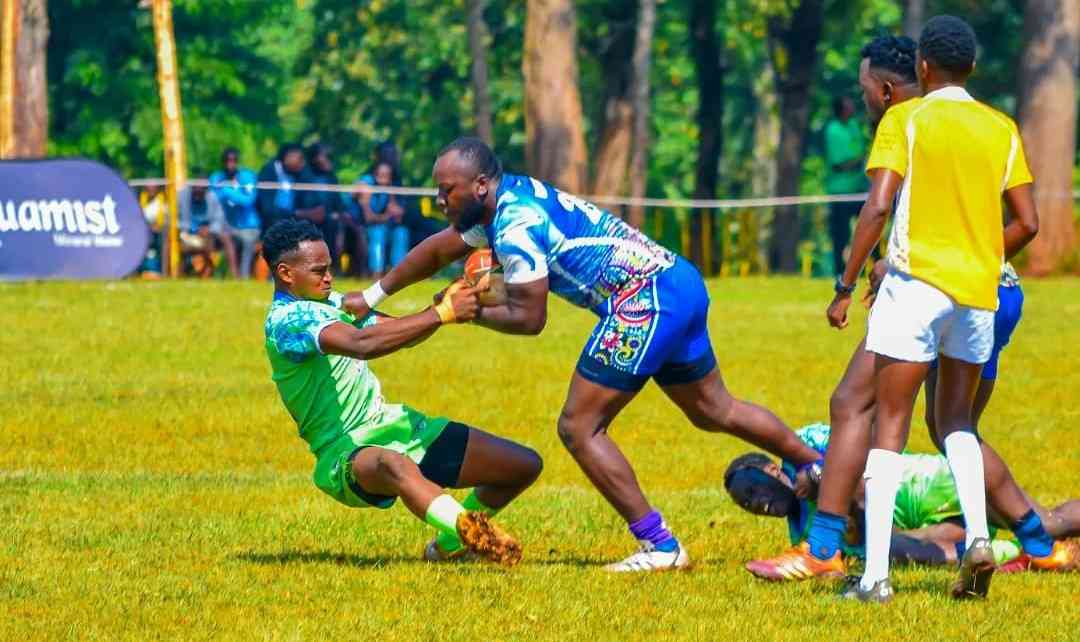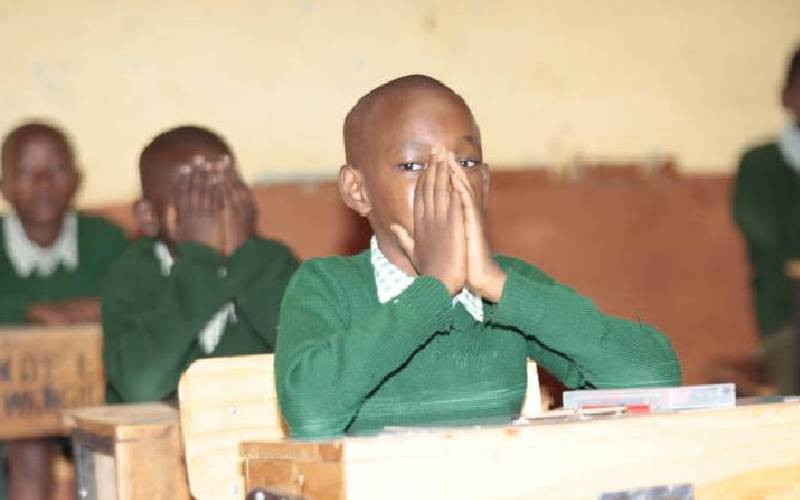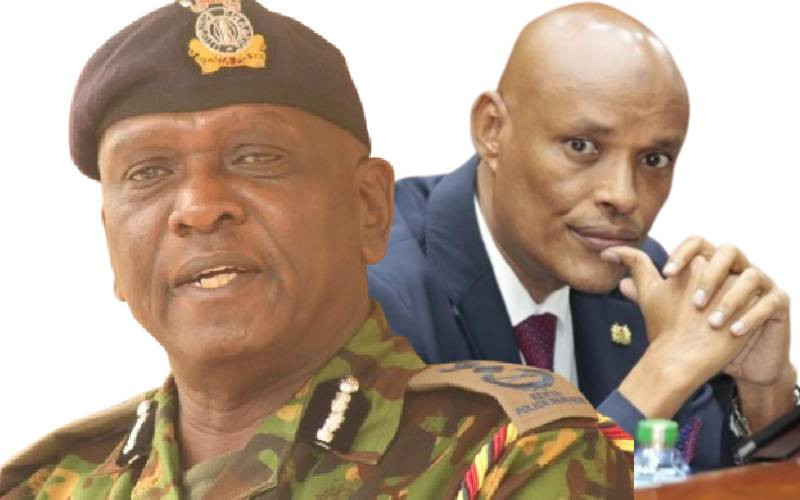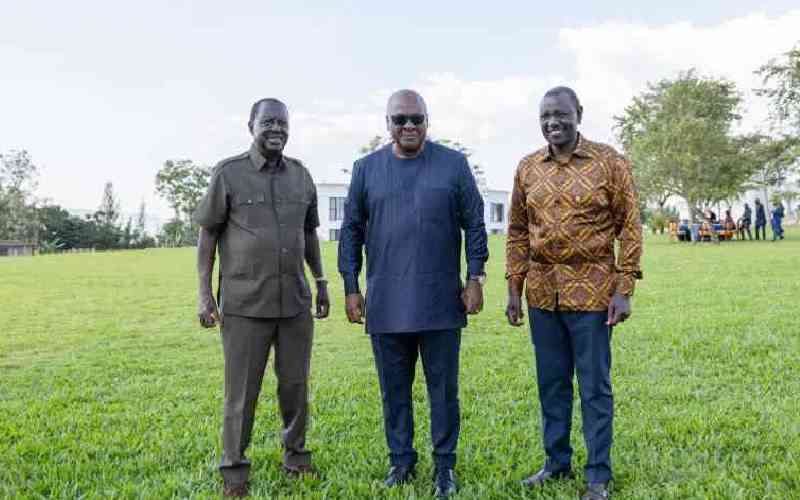Beginning this weekend, exclusively in The Standard On Saturday and The Standard On Sunday, we bring you a special book serialisation: ‘Kenya: A History Since Independence’ by CHARLES HORNSBY. We pick up from where our historical series ‘Sins of Our Fathers’ ends, with ruling party Kanu split on tribal and ideological lines and Gema on the horizon.
Following the ouster of the radicals led by former Vice-President Oginga Odinga, Kanu lapsed into disarray.
The party remained technically an illegal organisation throughout the next decade, having failed to hold national elections as required by its constitution.
It had not held an annual Delegates’ Conference since 1966; it had no elected secretary-general (since Economic Planning Minister Tom Mboya’s killing) and the Governing Council and NEC had not met since 1969.
The Government maintained a conspiracy of silence about this inconvenient fact. Attempts by the unofficial opposition to publicise it were dodged by (Attorney General Charles) Njonjo, who placed the burden of submitting annual returns to the registrar at branch level, and refused to answer any questions on the party’s national position.
Kanu’s purpose
Kanu’s purpose was to serve as a (weak) basis for legitimacy, a venue for factional competition, a platform for publicity and a means of rewarding and punishing local dignitaries. It decided nothing, organised nothing and did nothing.
It was a convenient fiction (more convenient than not having a political party).
Its sole operational role came in regulating electoral competition, where it could filter out a few undesirables.
June 1970 saw the first attempt to declare a formal one-party State, with a parliamentary Motion proposed by Kirinyaga backbencher James Njiru (which had been agreed with Paul Ngei, Daniel arap Moi and Mwai Kibaki beforehand).
The majority of backbenchers rejected it. Politicians saw that there was little prospect of advancement outside Kanu for now, but wished to keep their options open for the post-Mzee era. Kenyatta appeared to favour a formal one-party State, but was unwilling to legislate it against the will of the majority.
Meanwhile, to quiet protests, in April 1970 Kenyatta had announced the establishment of a special Kanu Reorganisation Committee led by Vice-President Moi, to revitalise the party.
When it reported in August 1971, it recommended that the eight provincial vice-presidents created just five years before to undermine Odinga be abolished and a single vice-president restored.
The party organisation was realigned to match districts and parliamentary constituencies (to stabilise the political hierarchy) and the composition of party committees changed.
No changes were made to the way Kanu’s presidential candidate would be elected, however, leaving it in the hands of the National Delegates’ Conference.
The party announced that grassroots elections would begin in March 1972, but there was nothing to suggest the party would adhere to its new organisation any more than it had to the old.
Campaigning soon began for the new posts. True to form though, Kenyatta did not actually intend to hold such elections; March 1972 came and went, and the polls were deferred, with the pathetic excuse that the All-African Trade Fair was on at the time.
The real reasons related to the ability of each faction to defer the polls if it felt it might lose, and to the low number of Kanu members. The paid-up membership of the party was believed to be no more than 340,000.
Such low figures reflected not only the irrelevance of the party, but also the factional nature of membership, as officials were frequently accused of denying membership to those unlikely to vote for them.
As Kanu declined, so a new organisation emerged, the Gikuyu, Embu and Meru Association (Gema), whose name was to become a shorthand for the commercial and political aspirations of the ethnic groups living around Mount Kenya.
First formed in 1971 under the leadership of Julius Kiano and incumbent MPs, Gema was reconstituted as a more broad-based welfare union for the Kikuyu, Embu and Meru peoples in 1973. Kenyatta himself was patron, self-made timber merchant and beer and cigarettes distributor Njenga Karume (Kiambu) became its chairman, governor of the Central Bank Ndegwa (Nyeri) was vice-chairman, and land-buying company chairman Kihika Kimani (Nakuru) was organising secretary. Less-prominent Embu and Meru leaders became treasurer and secretary-general (part of a consistent pattern, in which Kikuyu leaders would mobilise the Embu and Meru around their collective identity, but allocate the lion’s share of the spoils to themselves).
The 1973 Gema elections were heavily contested, as it was clear the organisation would play a key role in ethno-regional politics. Gema also established a commercial subsidiary with a public shareholding, to invest in land-buying and businesses.
Stay informed. Subscribe to our newsletter
Contested elections
It was clear Gema intended to be another means by which the Kikuyu elites would advance their interests.
In 1973, for example, backbencher Mwangale warned that GEMA must not turn into ‘KANU A’. Gema itself may have contributed to the deferral of the Kanu elections. The British were told confidentially that in August 1972 Gema leaders met Kenyatta and asked that the elections be postponed, as they did not feel confident that enough sympathetic candidates would win.
The main internal problem the regime faced was the question of the succession. By 1971, the British government had already prepared telegrams from their queen and prime minister for Kenyatta’s death. Although he was still alert, he was nearly 80, suffering from vomiting and sores, and likely to have another stroke at any time.
With Mboya dead and Odinga neutralised, speculation and intrigue centred on Vice-President Moi and his chances to succeed Mzee.
Although Kenyatta had chosen Moi as his nominal successor, he did not appear to accept his own mortality and he did nothing to anoint or to delegate authority to Moi.
His ambivalence left the succession open, keeping the pressure off him and on the struggle to succeed him. Moi was the most likely candidate as interim president, but analysts felt the longer Kenyatta lasted, the less likely Moi was to be able to stave off the ‘family’ candidate Njoroge Mungai.
Rumours of corruption
At this time, most foreign observers and many Kenyans felt that only a Kikuyu could rule Kenya, because of the numerical strength, economic and political power and vice-like grip that they had had on the State since independence.
Views of Moi were inconsistent – some saw him as ‘weak and ineffectual’, others as ‘strong, but not particularly smart’.
His sincerity and capacity for hard work were assets, but there were rumours of corruption; and he had shown an autocratic streak as Home Affairs Minister.
He had the support of most Kalenjin MPs and the guarded endorsement of ex-Kadu leaders such as Masinde Muliro, Ronald Ngala and Maasai MP Stanley Oloitiptip. He also had good personal relations with Western Governments and intelligence services. Nonetheless, he was not one of the real insiders.
Many expected that even if Moi did emerge as titular president, the Kikuyu would wield real power behind the scenes. Some saw Njonjo – who was backing Moi for the succession but had little popular base himself – as a potential prime minister to Moi’s president.
In fact, Mungai was the British High Commission’s preferred successor. It commented in 1970 that he had ‘outstandingly the best presidential credentials’. Mungai was one of the Kiambu elite, related to Kenyatta, clever, ambitious and well funded.
Lacking firm base
However, he was not particularly popular and lacked a national base outside the Kikuyu.
The bitterness between the Moi–Njonjo and Mungai camps was open by 1971, and in 1972, the Lonrho representative was deported amid rumours he was supplying funds to Mungai.
Amongst the Kikuyu, both Charles Rubia and JM Kariuki were seen as future contenders.
However, both were long shots. Kariuki’s ego and aggression marked him out – in the prescient words of a pastoralist MP in 1971 – as a ‘better assassination prospect than a presidential one’.
Neither Koinange nor Njonjo, although key ‘behind the scenes’ operators, was a plausible president. Njonjo was unpopular and not a politician. Koinange was elderly and unlikely to step out from Kenyatta’s shadow. James Gichuru too was old, and increasingly unwell.
Another name occasionally mentioned was Nyeri Finance Minister Kibaki, seen as ambitious, likeable and intelligent, but also as lazy and lacking a firm political base. Amongst the non-Kikuyu, Ngala was highly rated by the Americans, but by few others outside the coast.
Although he had been Kenyatta’s equal in the early days, and retained leadership of the Giriama, he was not a confidante of Kenyatta, a national player or known for his administrative effectiveness.
 The Standard Group Plc is a
multi-media organization with investments in media platforms spanning newspaper
print operations, television, radio broadcasting, digital and online services. The
Standard Group is recognized as a leading multi-media house in Kenya with a key
influence in matters of national and international interest.
The Standard Group Plc is a
multi-media organization with investments in media platforms spanning newspaper
print operations, television, radio broadcasting, digital and online services. The
Standard Group is recognized as a leading multi-media house in Kenya with a key
influence in matters of national and international interest.
 The Standard Group Plc is a
multi-media organization with investments in media platforms spanning newspaper
print operations, television, radio broadcasting, digital and online services. The
Standard Group is recognized as a leading multi-media house in Kenya with a key
influence in matters of national and international interest.
The Standard Group Plc is a
multi-media organization with investments in media platforms spanning newspaper
print operations, television, radio broadcasting, digital and online services. The
Standard Group is recognized as a leading multi-media house in Kenya with a key
influence in matters of national and international interest.





